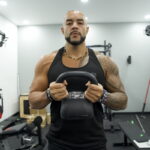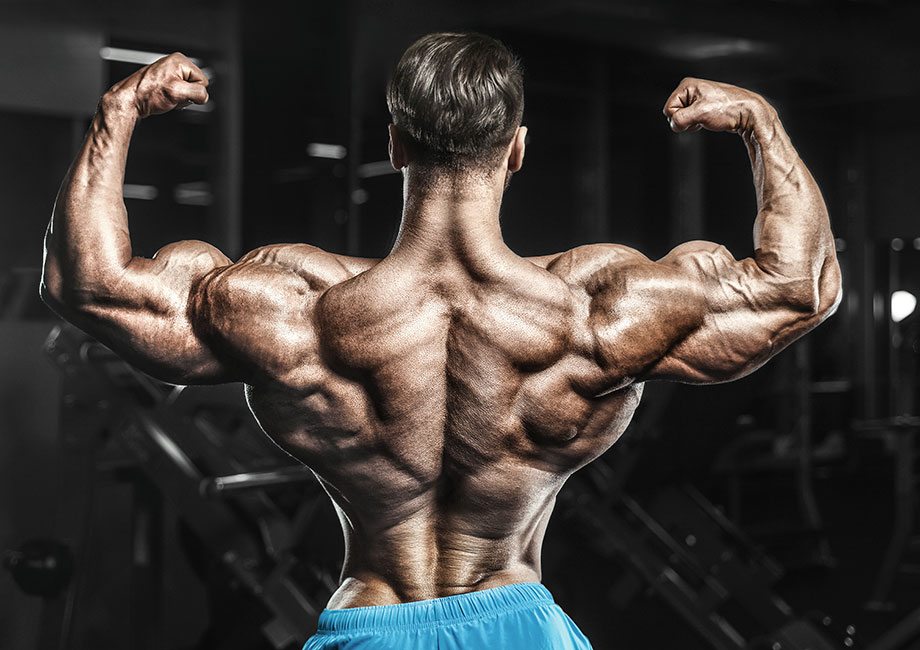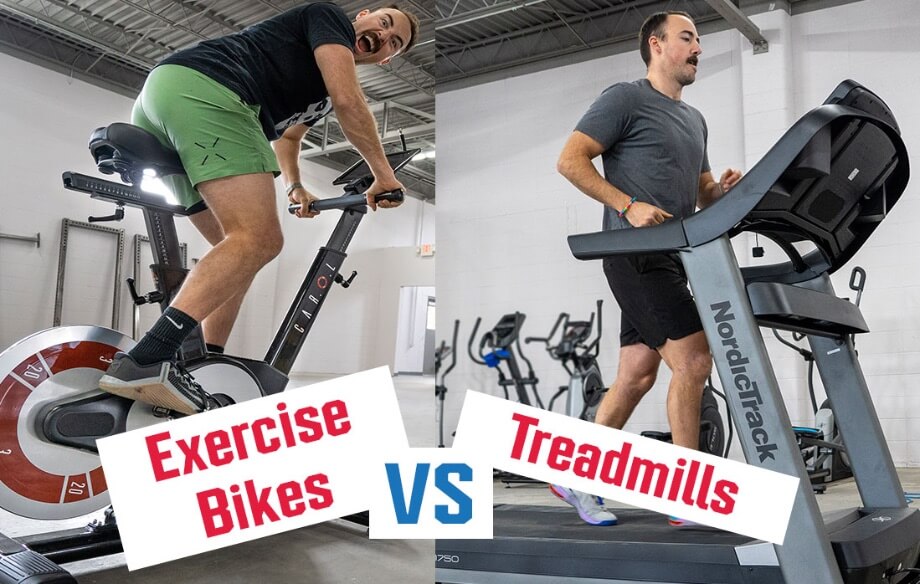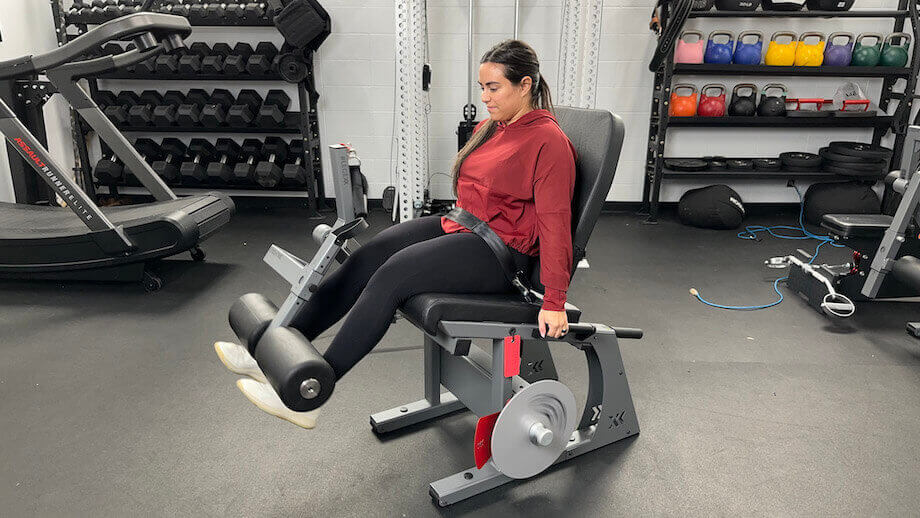Bodybuilding poses are more than just static positions designed to show off an athlete’s musculature for the judges. They represent the culmination of months (in reality, years) of hard work, dedication, and a profound understanding of the human physique.
RELATED: Bodybuilding Workouts: Build Your Arms, Legs, Back, and Glutes
From the graceful balance of the front double biceps to the dramatic flair of the most muscular pose, each tells a story of discipline and determination. In a sport where confidence, charisma, and conditioning can make all the difference between earning a callout or getting passed over, competitors must master eight mandatory poses and craft a creative posing routine that captivates the judges and the audience.
As a longtime bodybuilding fan and certified personal trainer, I’ve broken down the foundational elements of each pose so you can gain an even deeper appreciation for an art form where size, shape, and symmetry take center stage.
Mandatory Bodybuilding Poses
Whether it’s the highly acclaimed Mr. Olympia contest or another competitive bodybuilding event, you can expect participants to strike at least eight different poses. When it’s time to hit the stage, each competitor will have to perform the following mandatory poses:
- Quarter Turns
- Front Double Biceps
- Front Lat Spread
- Side Chest
- Back Double Biceps
- Rear Lat Spread
- Side Triceps
- Abdominals and Thigh
- Bonus: Most Muscular
RELATED: Back Muscles Anatomy
Quarter Turns
Quarter turns are the foundation of bodybuilding posing, as they allow judges to assess competitors from all angles. This pose emphasizes overall symmetry, proportion, and conditioning—key criteria in bodybuilding competitions. It also showcases a competitor’s ability to maintain tightness and control over their muscles throughout a posing routine.
To excel in quarter turns, bodybuilders focus on building balanced muscle development across all muscle groups, paying particular attention to the shoulders, chest, back, and legs. Legendary bodybuilders like Arnold Schwarzenegger and eight-time Mr. Olympia Ronnie Coleman are known for their flawless quarter turns, demonstrating impeccable symmetry and control on stage.
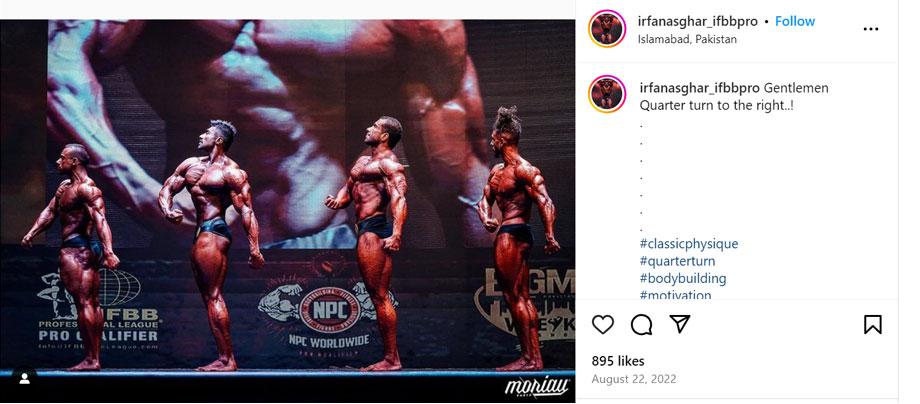
RELATED: Arnold’s Arm Workout
How to do it:
- Stand tall with your feet shoulder-width apart. Keep your arms relaxed at your sides and maintain good posture with your chest up and shoulders back.
- Slowly rotate your body 90 degrees to the right, keeping your head facing forward and your feet planted firmly on the ground. Ensure your torso faces the judges while your legs remain straight but not locked.
- Rotate your body another 90 degrees to the right until you face completely to the side. Keep your head facing forward and your arms relaxed at your sides. Your right side should be fully visible to the judges.
- Rotate your body another 90 degrees to the right, so your back faces the judges directly. Keep your head facing forward, and your arms should remain relaxed at your sides.
- Complete the quarter-turn sequence by rotating your body another 90 degrees to the right until you completely face the left side.
- Return to the front-facing position, completing the full rotation. Ensure that your posture remains upright, and your chest is still lifted.
Front Double Biceps
The front double biceps pose is one of the most iconic and recognizable poses in bodybuilding. After all, when you tell someone to “flex,” they’ll often bust out this pose to show off their bulging biceps and broad shoulders.
Posers need to keep their elbows high and concentrate on driving their lats out and forward to execute the front double biceps correctly. Bodybuilders often incorporate exercises like barbell curls, hammer curls, and chest presses into their training to enhance the size and definition of the muscles involved in this pose.
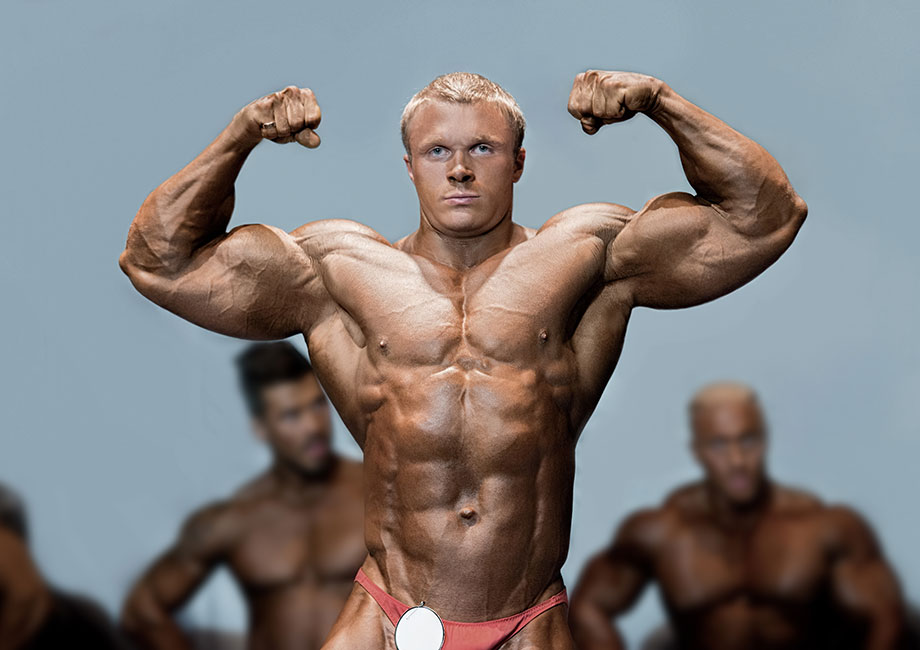
How to do it:
- Stand with your feet shoulder-width apart, facing the judges directly.
- Flex both arms simultaneously, bringing your fists close to your shoulders as you contract your biceps, chest, and shoulders.
- Hold the pose for a few seconds to allow the judges to assess your muscle size and symmetry, making sure to maintain tension throughout your core and legs.
RELATED: Hammer Curl vs Biceps Curl
Front Lat Spread
The front lat spread pose is all about showcasing upper-body width and thickness, particularly in the lats, chest, and shoulders. This pose accentuates a competitor’s V-taper, a desirable trait that demonstrates excellent conditioning when you have a tight waist and well-developed upper body. A proper V-taper requires sizable traps, rhomboids, delts, and lats to accentuate the inverted triangle shape.
Bodybuilders often focus on exercises like pull-ups, lat pulldowns, and row exercises to build width and thickness in their upper and lower-back muscles. Lee Haney, an eight-time Mr. Olympia, was well-regarded for his mastery of this mandatory pose, showcasing impressive lat width and overall upper-body definition.
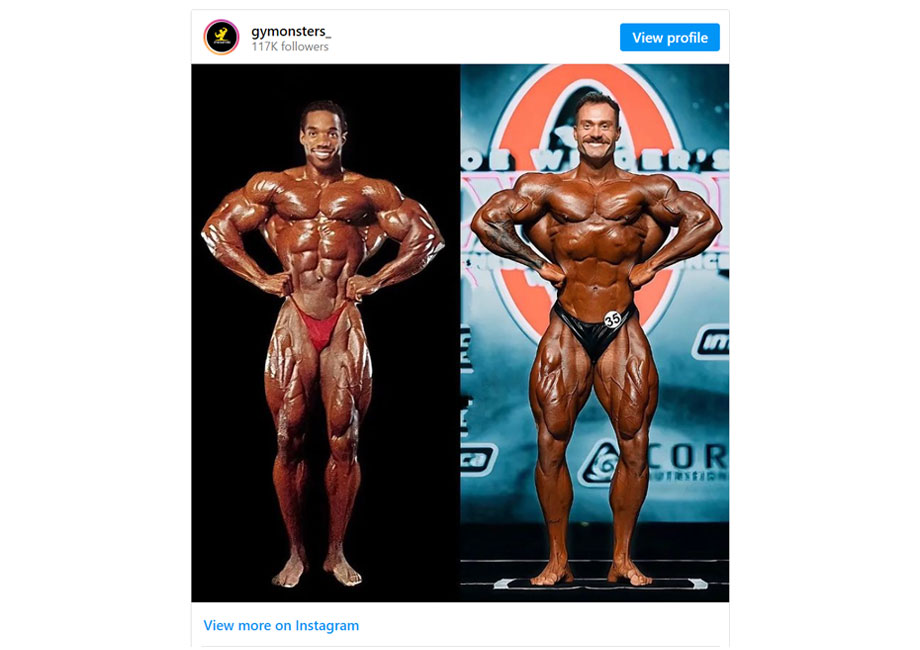
How to do it:
- Stand with your feet shoulder-width apart and your toes turned out at an angle.
- Contract your quadriceps and place your hands on your hips with your palms down.
- Push your chest forward, flare out your lats and shoulder blades, and arch your back slightly to emphasize a wide shoulder girdle and slim waist.
RELATED: The 10 Best Lower Lat Exercises
Side Chest
The side chest pose allows the judges to assess your hamstring and quad development from a side angle. It’s also an opportunity to showcase the fullness of your chest and upper arms.
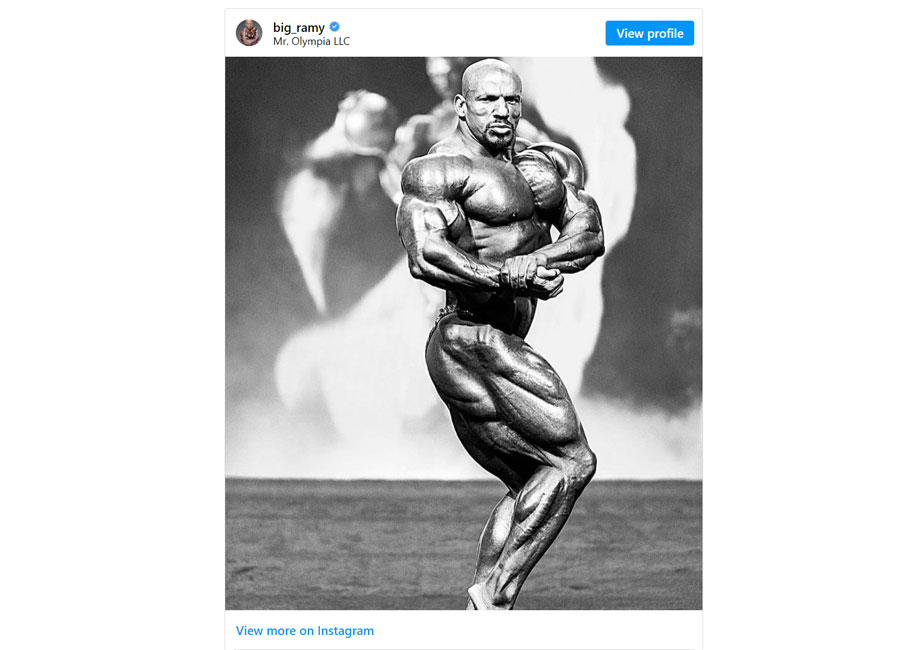
How to do it:
- Stand sideways to the judges with a staggered stance so one foot is slightly in front of the other and your knees are slightly.
- Bring both legs together, squeezing your hamstrings and quads.
- Pivot your upper body to face the audience.
- Form a 90-degree angle with one arm, then grab your wrist with the other, pushing your pecs out to emphasize the musculature of your upper body.
RELATED: 10 Best Chest Exercises
Back Double Biceps
The back double biceps pose shows the competitor’s back size and symmetry. It puts your lats, rhomboids, and traps on full display while also showcasing your biceps, hamstrings, and calves. Bodybuilders rely on exercises like deadlifts, rows, and pull-ups to build mass and detail in their back muscles. Plus, they also call upon curl variations to develop round, sculpted biceps.
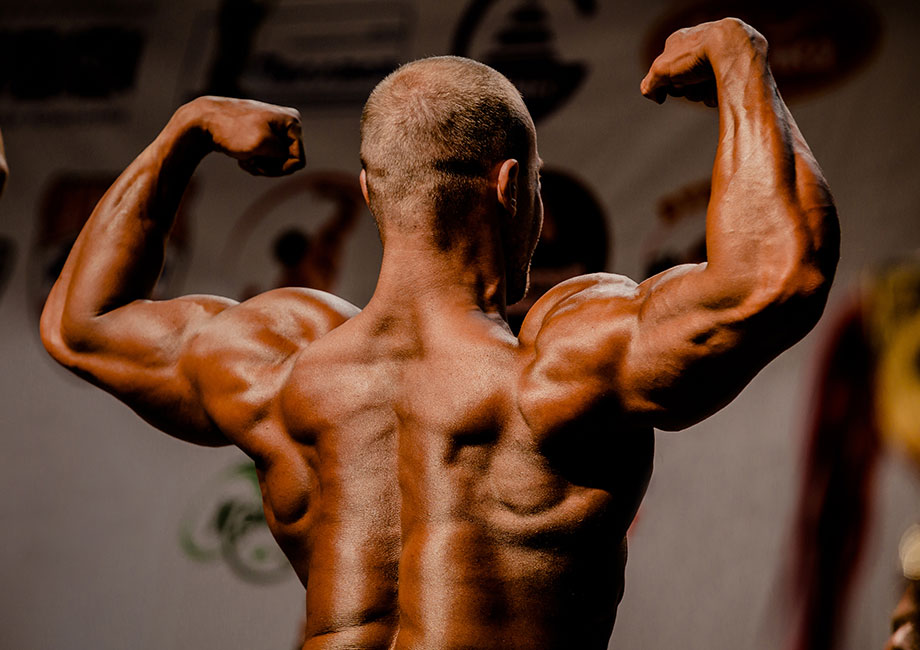
How to do it:
- Stand with your back to the judges.
- Bring your arms out to your sides and flex your biceps. Rather than pinching your shoulder blades together, keep them open so you can maximize the width of your lats.
- Learn your torso back slightly and keep your elbows higher than your shoulders to accentuate the V-taper.
- Contract your hamstrings and glutes to show the separation between those muscle groups.
RELATED: 9 Best Row Exercises For A Thicker Back And Bigger Biceps
Rear Lat Spread
The rear lat spread pose showcases the width and thickness of your back muscles. This pose particularly highlights the fullness and detail of your lats and traps. Bodybuilders utilize common exercises like pull-ups, lat pulldowns, and rows to create a wide, well-developed back that looks menacing on stage. The rear lat spread also showcases a competitor’s tapered waist.
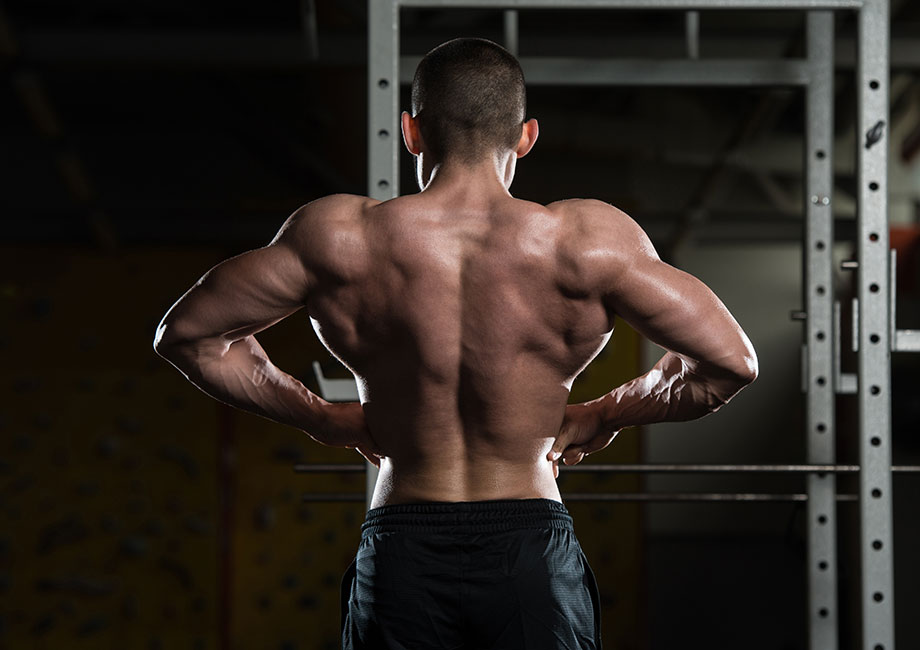
How to do it:
- Stand with your back to the judges.
- Step one leg backward and raise your heel slightly off the ground, contracting your calf muscle as much as possible.
- Pinch the sides of your waist between your thumbs and index fingers.
- Round your chest slightly forward and flare your lats out as far as possible to create maximum width.
RELATED: How To Do a Pull-Up
Side Triceps
The side triceps pose shines a spotlight on the fullness and detail of the three-headed muscle known as your triceps, particularly the lateral head. Bodybuilders typically train this muscle with movements like triceps extensions, dips, and close-grip bench presses.
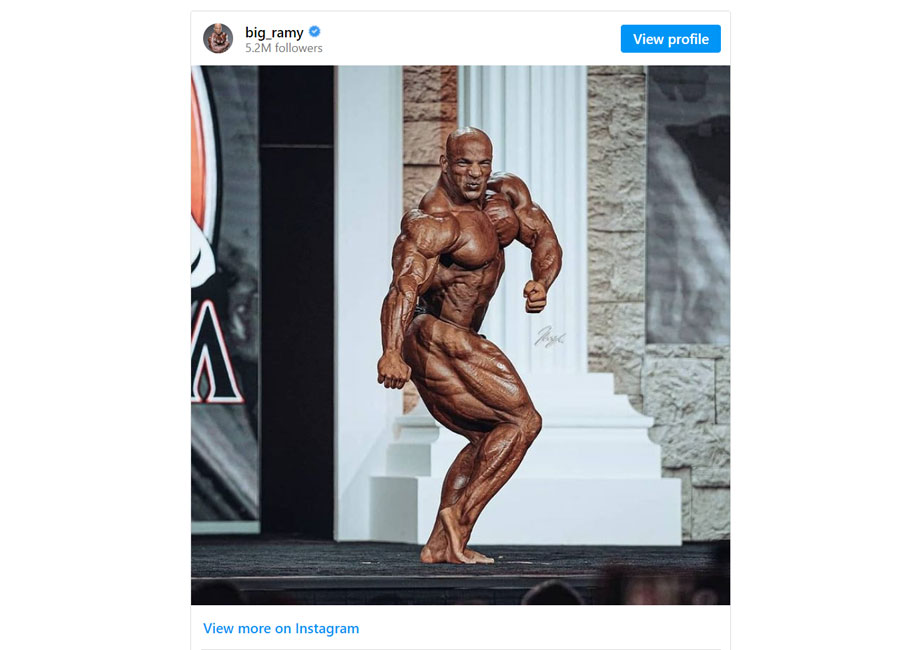
How to do it:
- Start from the side quarter-turn position with your left shoulder facing the judges.
- Bring your left arm across your lower back, and place your hands behind your back.
- Interlock the first two fingers of each hand, fully extending your left arm to lock out your triceps.
- Pull your shoulder back to display your chest, serratus, and midsection.
- Turn your waist slightly to maximize the width of your upper body and minimize your waistline.
RELATED: Tate Press: How to Take Your Triceps to the Next Level
Abdominals and Thigh
While most of the mandatory poses highlight your arms, chest, shoulders, and back, this one shifts the focus to your midsection and legs. The abdominals and thigh pose allow the judges to see the definition and detail in your obliques, quads, glutes, hamstrings, and calves.
Bodybuilders can’t afford to skip leg day or stray from their diet if they want to achieve the right look for this pose. Incorporating exercises like squats, leg extensions, lunges, and calf raises can help build strong, muscular legs. Meanwhile, the path to a sculpted six-pack involves plenty of core exercises and a well-formulated nutrition plan that trims away body fat so you can see clearly defined abs. As the saying goes, “Abs are made in the kitchen.”
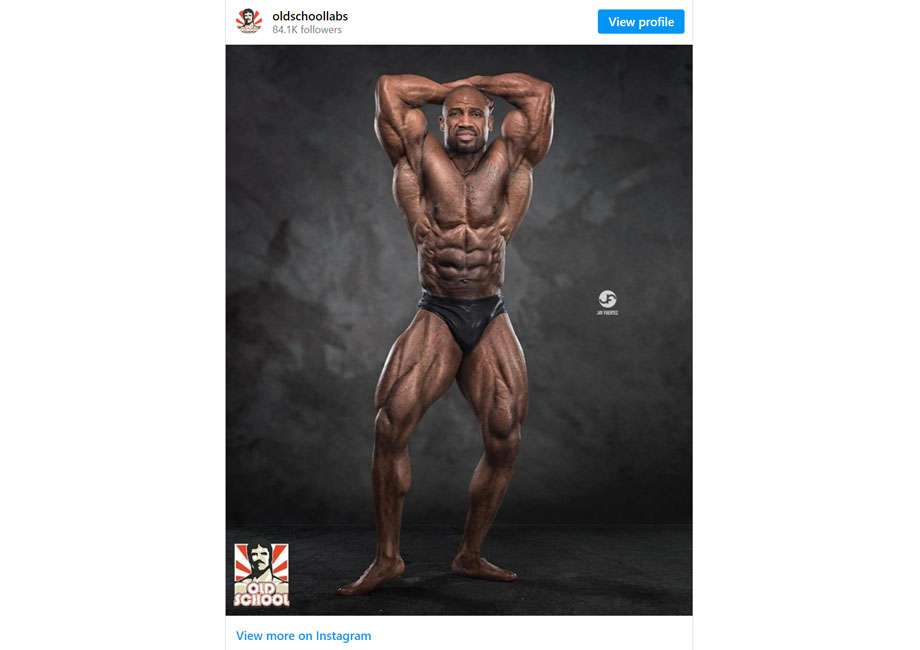
RELATED: Best Bodybuilding Meal Delivery
How to do it:
- Stand sideways with a staggered stance, flexing your calves, quads, and hamstrings in the process.
- Raise your arms up and clasp your hands together behind your head.
- Exhale sharply and contract your abs as hard as possible to display the most definition.
Most Muscular
Although it’s not officially recognized by every bodybuilding federation, you’ll often see the most muscular pose performed in men’s competitions. Also known as the crab pose, it involves flexing just about every muscle group to create a rugged, powerful appearance. Dorian Yates, who won six consecutive Mr. Olympia titles between 1992 and 1997, excelled at showing off his massive frame with this pose.
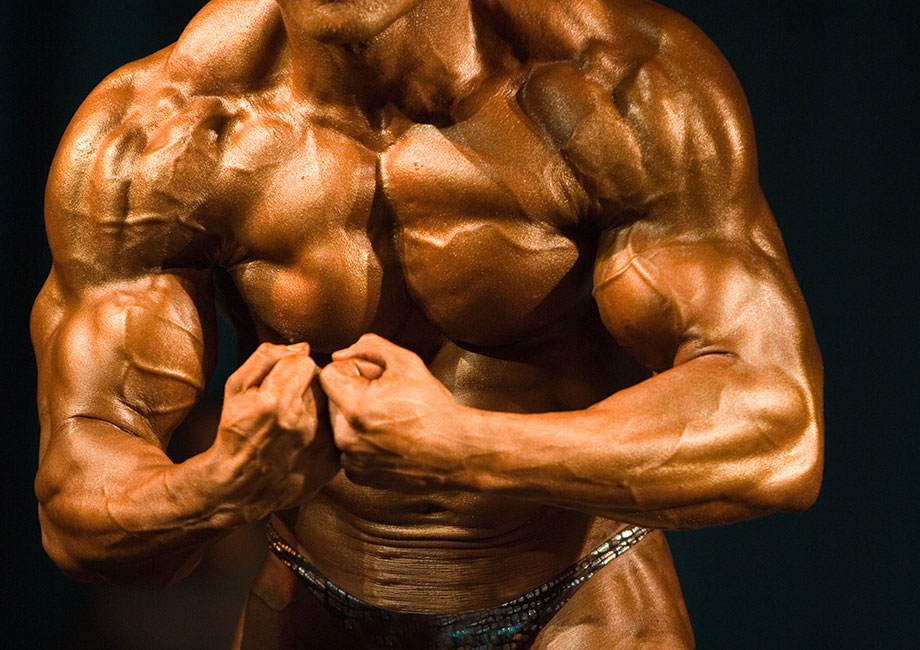
How to do it:
- Stand with your feet shoulder-width apart facing the judges.
- Clench your fists and bring your arms in front of you, flexing your biceps as hard as possible.
- Rotate your shoulders forward and spread them apart to emphasize the width of your chest.
- Tighten your abs and contract your entire body, including your thighs and calves.
- Hold the pose to showcase your overall muscle size and definition.
Mandatory Poses vs. Posing Routine
Mandatory poses give the judges a standardized way to compare competitors’ physiques based on specific criteria such as symmetry, proportion, muscularity, and conditioning. Competitors must execute these poses precisely to emphasize their strengths and minimize their weaknesses. Mastery of mandatory poses is essential for success in bodybuilding competitions, as they form the foundation of a competitor’s presentation and are crucial for earning high scores from the judges.
On the other hand, a posing routine is a choreographed performance that allows bodybuilders to showcase their physique in a more artistic and individualized way. Unlike mandatory poses, which are standardized and must be performed by all competitors, posing routines give athletes the freedom to express their personality, style, and creativity on stage.
Posing routines typically include a series of transitions between poses, fluid movements, and poses that highlight the competitor’s best features. While posing routines are not mandatory in bodybuilding competitions, they’re often used to leave a lasting impression on the judges and the audience, and can set competitors apart from their peers. For example, three-time Mr. Olympia runner-up Kai Greene has earned a reputation for putting on some of the best posing routines by displaying incredible flexibility and range of motion for a man with such a sheer amount of muscle mass.
How Bodybuilding Is Judged
Considered the Super Bowl of bodybuilding, the Mr. Olympia contest—the main event of the Olympia Fitness & Performance Weekend—takes place annually in the heart of Las Vegas. Sanctioned by the International Federation of Bodybuilding and Fitness (IFBB) Pro League, this prestigious competition gives elite athletes across 11 divisions the chance to earn a coveted title, prize money, and bragging rights. Derek Lunsford captured the 2023 Mr. Olympia crown two years after taking home the Men’s 212 division title.
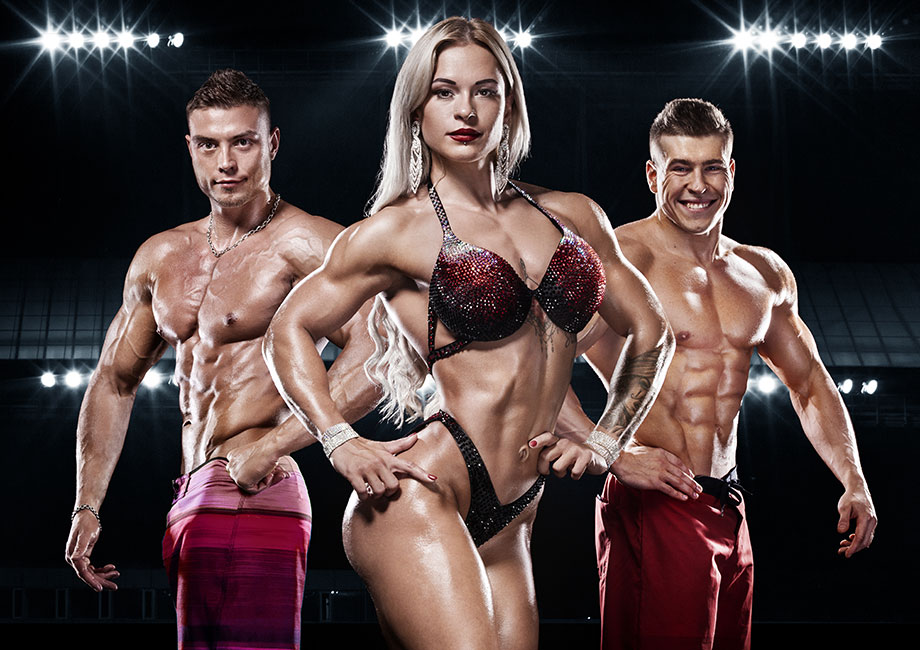
- Men’s Open: Features the largest and most muscular male athletes, emphasizing mass, symmetry, and conditioning.
- Men’s 212: Showcases athletes weighing up to 212 pounds, focusing on proportion, symmetry, and muscularity.
- Classic Physique: Emphasizes a smaller, more aesthetic physique reminiscent of bodybuilders from the ‘70s and ‘80s. Chris Bumstead has captured five consecutive Classic Physique crowns, cementing his case as one of the sport’s all-time greats.
- Men’s Physique: Highlights a beach-body type of physique with less emphasis on muscle mass and more focus on a tight torso taper. Competitors wear board shorts instead of posing trunks.
- Women’s Bodybuilding: Also referred to as Ms. Olympia, women’s bodybuilding features female athletes with significant mass and definition, showcasing their muscularity, symmetry, and conditioning. Consider Iris Kyle the GOAT of this category with 10 overall and two heavyweight Olympia titles.
- Women’s Physique: Showcases female athletes with a balance of muscle size, symmetry, and conditioning.
- Women’s Wellness: Emphasizes a healthy, feminine physique with a balance between muscle size and symmetry, promoting overall well-being and vitality.
- Figure: Displays a toned and athletic look with less muscle size than Women’s Physique but more than Bikini, focusing on muscle tone, symmetry, and overall presentation. You’ll often see competitors perform calisthenics-based routines and gymnastics feats on stage.
- Fitness: Combines athleticism and physique, requiring competitors to perform a routine that includes strength, flexibility, and dance elements alongside showcasing their physique.
- Bikini: Focuses on a lean, yet feminine physique with less muscle mass compared to other divisions, emphasizing overall shape, tone, and stage presence.
- Wheelchair Bodybuilding: Showcases athletes with physical disabilities who compete in traditional bodybuilding poses and routines, highlighting their muscularity and symmetry.
Judges assess competitors based on factors such as muscularity, symmetry, and conditioning. Each division may have specific criteria tailored to its aesthetic goals.
After evaluating the competitors, judges may call them back on stage to perform side-by-side comparisons, allowing for direct comparisons of their physiques. Once the judges narrow down the field for the finals, competitors perform a posing routine set to music, showcasing their physique and posing skills.
Judges consider their presentation, transitions between poses, and overall stage presence before assigning scores to each competitor based on their assessment of the criteria.
Bodybuilding Poses: Final Thoughts
Pro bodybuilders dedicate their lives to doing everything possible to build muscle and keep body fat at bay. That mission certainly isn’t easy, it requires incredible discipline and accountability to get contest-ready.
Ultimately, mastering the mind-muscle connection in the gym is only part of the equation to becoming a champion. It also takes plenty of practice, patience, and persistence to perfect the eight mandatory poses and put together a winning posing routine.
Bodybuilding Poses: FAQs
What are the most popular bodybuilding poses?
The most popular bodybuilding poses include the front double biceps, back double biceps, rear lat spread, and side triceps.
How many poses are in bodybuilding?
There are typically eight mandatory poses in bodybuilding competitions: quarter turns, front double biceps, front lat spread, side chest, back double biceps, rear lat spread, side triceps, and abdominals and thigh.
How do bodybuilders practice their posing routines?
Bodybuilders practice their posing routines through regular rehearsal sessions focusing on smooth transitions between poses. They often seek guidance from posing coaches or mentors to refine their routines for the stage to emphasize their physique’s best angles.

